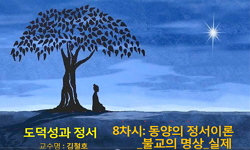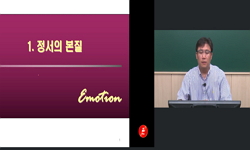본 논문은 (인공) 정서 시대에, 다양한 사회적 영역에서 수렴적 이슈가 되고 있는 정서와 연기 테크닉을 연구한다. 필자는 주디스 버틀러(Judith Butler)가 우리의 실제 삶과 지배적 ‘젠더’ 개...
http://chineseinput.net/에서 pinyin(병음)방식으로 중국어를 변환할 수 있습니다.
변환된 중국어를 복사하여 사용하시면 됩니다.
- 中文 을 입력하시려면 zhongwen을 입력하시고 space를누르시면됩니다.
- 北京 을 입력하시려면 beijing을 입력하시고 space를 누르시면 됩니다.

(인공) 정서 시대의 과학적 정서 이론과 연기 테크닉의 문제 -알바 이모팅 테크닉을 중심으로- = ‘Emotion Trouble’ and an Acting Technique -Focused on Alba Emoting Technique-
한글로보기https://www.riss.kr/link?id=A108335277
- 저자
- 발행기관
- 학술지명
- 권호사항
-
발행연도
2022
-
작성언어
-
-
주제어
연기 ; 연기 테크닉 ; 정서 ; 인공 정서 ; 알바 이모팅 테크닉 ; acting ; acting technique ; emotion ; artificial emotion ; Alba Emoting Technique
-
KDC
600
-
등재정보
KCI등재
-
자료형태
학술저널
-
수록면
137-196(60쪽)
- DOI식별코드
- 제공처
-
0
상세조회 -
0
다운로드
부가정보
국문 초록 (Abstract)
본 논문은 (인공) 정서 시대에, 다양한 사회적 영역에서 수렴적 이슈가 되고 있는 정서와 연기 테크닉을 연구한다. 필자는 주디스 버틀러(Judith Butler)가 우리의 실제 삶과 지배적 ‘젠더’ 개념의 틈에서 발생하는 ‘젠더 문제(gender trouble)’를 심층적으로 다루었듯이, 연기 창조 과정과 연기 테크닉 개발에 있어서, 기존 정서 개념과 현상학적으로 우리가 마주하는 정서 ‘사이’에서 발생하는 ‘정서 문제(emotion trouble)’를 다룬다; ‘정서의 소환,’ ‘정서 재현,’ ‘정서 동일화,’ ‘연기자의 감정선,’ ‘정서적 몰입,’ ‘진정성 있는 연기,’ ‘진짜 정서.’
과학적 정서 이론의 계보를 살펴보면, 정서 개념은 크게, 본질주의적 정서 개념과 구성주의적 정서 개념으로 나눌 수 있다. 전자에는 내용적 차이가 존재하지만, 폴 에크만(Paul Ekman)과 수잔나 블로흐(Susana Bloch) 등이 속하는데, ‘보편적 기본 정서,’ ‘내재적 신경 다발,’ ‘순수 정서’와 같은 본질주의적 아이디어를 옹호한다. 본질주의적 접근의 특징은 ‘줄무늬 무지개’로 표현되는 확실하고 명확한 구분과 경계로서의 정서 개념이다. 한편, 정서의 구성주의적 입장을 지지하는 리사 펠드먼 배럿(Lisa Feldman Barret)과 마크 브라켓(Marc Brackett) 같은 인지심리 학자들은, 정서를 ‘스펙트럼으로 나타나는 무지개’처럼, 경계가 모호한 다양한 차이로 정의한다.
필자는 정서 문제에 과학적으로 접근하기 위해, 본질주의적 정서 개념을 비판하며, ‘구성’으로서의 정서 개념을 도출하는 배럿의 ‘구성된 정서 이론’을 살펴본다. ‘구성된 정서 이론’에서, 정서는 우리 몸마음의 신경 네트워크에 의해 ‘구성’되며, 감각, 이미지, 사고, 언어 수행과 동시적으로 발생하는 과정이며, 우리 몸마음의 ‘행위’이다. 살아 숨 쉬는 연기자의 몸이, ‘제2의 몸,’ 즉 ‘가상의 몸’을 구성해서 가상 세계를 살아가는 연기 창조 과정에서, 정서는 언제든지 소환해서 불러낼 수 있고, 필요 없으면, 도로 갖다 놓을 수 있는 재현 가능한 그 어떤 것이 아니다.
뇌과학자이자 인지심리학자인 수잔나 블로흐는 본질주의적 정서 개념을 바탕으로, 연기자가 언제든지, 의지하는 대로, 정서를 유도하고, 관객에게 생생하게 전달할 수 있는, 비법 같은 알바 이모팅 테크닉(Alba Emoting Technique)을 제시한다. 필자는 드니 디드로(Denis Diderot)의 역설을 풀 황금 열쇠를 가질 수 있다고 약속하는 것처럼 들리는, 이 알바 이모팅 테크닉을 ‘구성된 정서 이론’의 전망에서 조명한다. 연기자의 가상의 몸에 숨을 불어 넣고 맥박을 뛰게 할 수 있을 만한 강력한 알바 메소드의 정서 효과기 패턴(Emotional Effector Pattern) 훈련은 그 매력만큼이나, 리스크 또한 적지 않다. 그러나, 무엇보다, 알바 이모팅 테크닉은 연기자가 상징적인 기호로서의 얼굴 표정이나, 제스처에 의존할 것이 아니라, 온전히 집중된 몸마음의 생리신체적 접근을 강조한다.
배럿의 구성된 정서 이론의 신경 메카니즘에서 바라보면, 테크닉의 체화는 신체적 근육의 움직임을 포함하는, 우리 세포와, 신경계, 내장을 변화시키는 재체화(reembodiment)이며, 우리 몸마음의 재구성(reconstruction)이다. 필자는 구성된 정서 이론의 입장에서, 알바 이모팅 테크닉의 본질주의적 태도를 비판하면서도, 알바 이모팅 테크닉의 생리신체적 접근의 장점을 활용할 수 있는 방안을 제시한다. 필자는 알바 이모팅 테크닉과 다른 체화 테크닉들, 즉 이미지 체화법, 신체적 행동법, 가상의 몸, 조형술, 뷰포인트 등의 다양한 테크닉들이, 어떠한 기초적 바탕과 원리에서 상호보완적으로 활용될 수 있는지 논의한다.
다국어 초록 (Multilingual Abstract)
In this paper, I deal with ‘emotion trouble,’ in a manner Judith Butler looks at the matter of gender. According to Burtler, we do not inherit gender, but we do perform our gender. Likewise, our emotions are not based on a bunch of neuronal bundle...
In this paper, I deal with ‘emotion trouble,’ in a manner Judith Butler looks at the matter of gender. According to Burtler, we do not inherit gender, but we do perform our gender. Likewise, our emotions are not based on a bunch of neuronal bundles with which we react to our environment. Rather, our emotions are the active simulations of our bodymind from which we can predict our present and future against the harsh environment surrounding us. Truly, the matter of emotion is a converging issue throughout many disciplines and fields. We are witnessing the production of a human-like robot and an autonomous agent in terms of having a human-like artificial emotion. Even for the machines, compassion and empathy are the most valuable ethical grounds.
As an acting teacher and a director, I face ‘emotion trouble,’ both in a class and in the theatre. What is an emotion? Or, in the way William James questions, where is an emotion? Why do we so care about our emotions? Why do the actors try hard to get right emotions during the course of storytelling? As a practitioner, how can I approach emotions being described as a spectrum of a rainbow? How can we control our emotions even though we do not know much about our emotions? In this paper, I examine ‘emotion trouble,’ especially, regarding an acting technique, focused on a specific acting technique called Alba Emoting Technique(AET) conceived by Susana Bloch. Against the theory of the constructed emotion, I look into the core system of ATE, Emotional Effector Patterns, which are constituted as triad of breathing, facial-expression, and posture. From the perspectives of the new emotion paradigm, I examine the promises and hopes of ATE to unlock the Diderot’s paradoxes, not to reject ATE, but to reconsider the matter of embodiment of emotions from the ground.
동일학술지(권/호) 다른 논문
-
1970년대 ‘전통의 현대화’ 담론과 공연 양상의 변곡점
- 한국드라마학회
- 박미란 ( Park Miran )
- 2022
- KCI등재
-
발달변형(DvT)이론의 놀이공간에서 드러난 놀이기능에 관한 연구
- 한국드라마학회
- 황소연 ( Hwang So Yeon )
- 2022
- KCI등재
-
- 한국드라마학회
- 정미경 ( Jung Mi-kyung )
- 2022
- KCI등재
-
타자의 고통을 매개하는 몸-되기 -크리에이티브 VaQi의 <그녀를 말해요>와 공연창작집단 뛰다의 <휴먼푸가>의 연기 수행방식을 중심으로-
- 한국드라마학회
- 나경민 ( Na Kyung-min )
- 2022
- KCI등재




 KCI
KCI KISS
KISS






